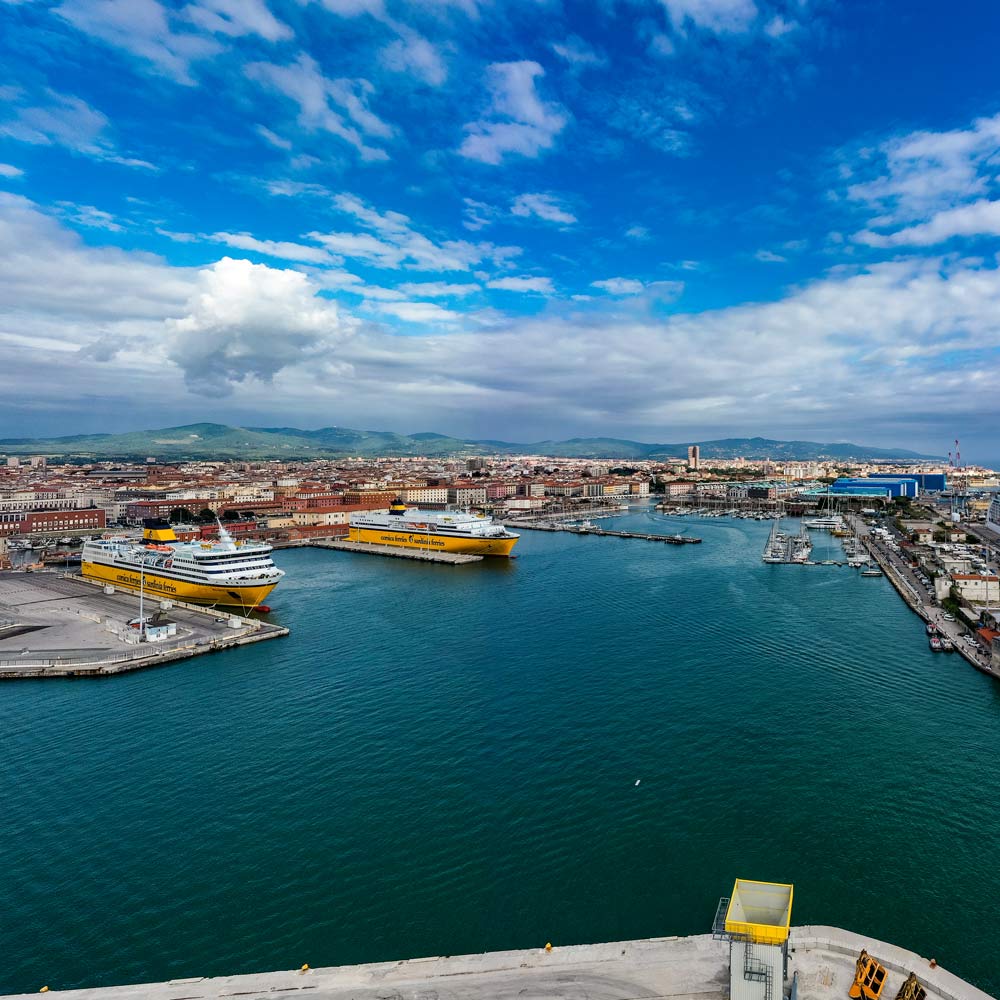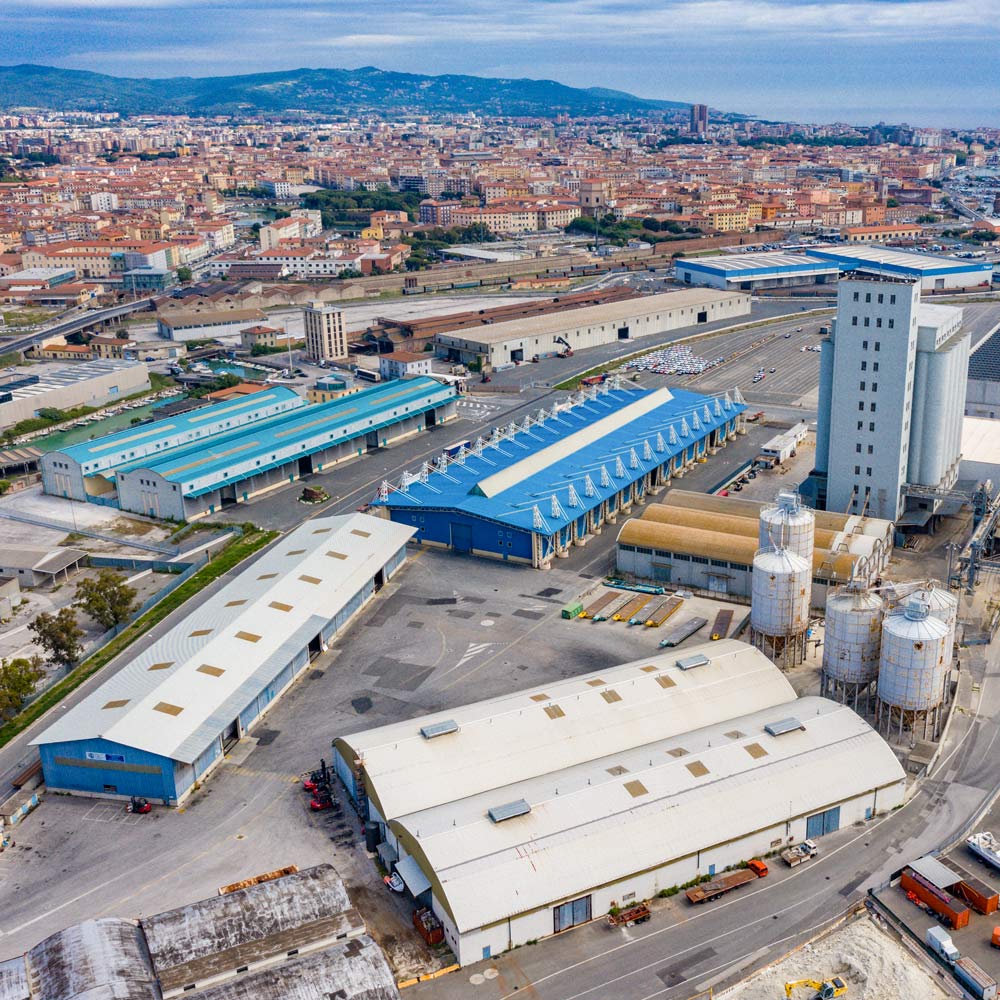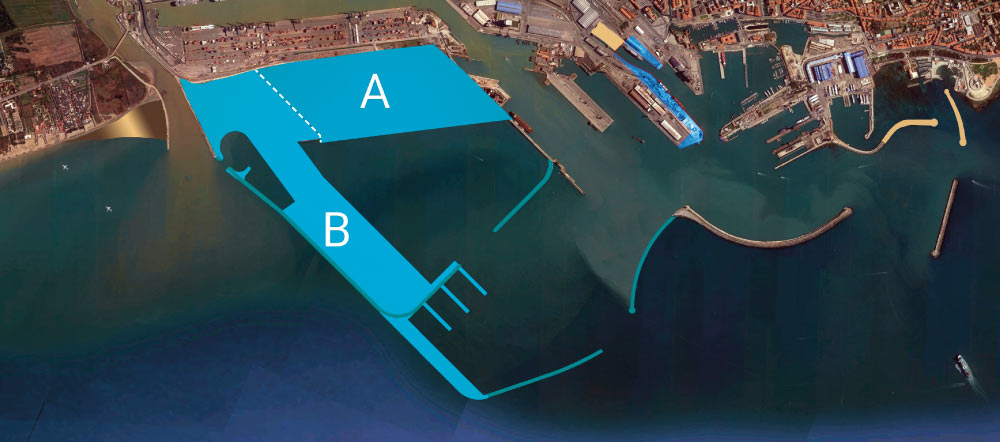The Port of LIVORNO
The Port in Numbers


INFRASTRUCTURE
Facility A 3,600 m2 facility for ferry passengers with about 20,000 m of parking space
Cruise Terminal (Porto Mediceo) A 3,600 m2 Cruise Terminal (Porto Mediceo) equipped with top quality amenities and safety measures with 9,500 square meters of parking space
Cruise Terminal A 3,000 Cruise Terminal (Alto Fondale) with an 11.000 m2 parking area
Total railway area approximately 41 km operational Livorno Calambrone railway station: over 9 km Livorno Darsena railway terminal (with arrival/departure tracks at 750 m): approx. 3 km Railway junctions and tracks currently in use (Porto Vecchio, Porto Nuovo, Darsena Toscana, Industrial Canal): approximately 14 km Port – Freight village link: 5 km Freight village railway track: 3 km Freight village industrial links: 7 km

Operating machines
Quay cranes
Mobile handling cranes various types/handling capacities
CranesMobile grain-handling 3 crane (Silos)
Tugs13 RINA-certified tugs with dual azimuth propulsion and firefighting capability (FiFi-1), ranging from 2,100 to 7,000 Bhp
Sheerleg cranesThe port also offers a number of sheerleg cranes, in particular the ITALIA sheerleg (1,000 tonne capacity), barges and other tugs used for rescue operations, coastal towing, salvage, marine pollution prevention, heavy lifting offshore operations, pier and quay construction

TECHNICAL-NAUTICAL SERVICIES
Floating docks“Mediterraneo” for ships up to 180 m long and “Ercolino II” for vessels up to 100 m
Shipyards Shipyards and workshops for shipbuilding and ship repairs
Sheerleg cranesThe port also offers a number of sheerleg cranes, in particular the ITALIA sheerleg (1,000 tonne capacity), barges and other tugs used for rescue operations, coastal towing, salvage, marine pollution prevention, heavy lifting offshore operations, pier and quay construction
RimorchiatoriSono inoltre operativi H24 per 365 giorni all’anno i servizi di pilotaggio e ormeggio ed un servizio di bunkeraggio

operatori Nel dettaglio
Nella mappa sono localizzati e evidenziati i punti di interesse del porto di Livorno suddivisi per aree funzionali/attività marittimo-portuali attualmente operativi, nelle more dell’attuazione del Piano Regolatore Portuale-PRP.
Cartina in fase di Aggiornamento
THE PORTS LOOK TO THE FUTURE

4 km of new quays, 2 million square metres of yards, with depths of up to -20 m and a new harbour entrance which can rise to the challenge posed by mega-ships. We are referring to the Darsena Europa, an expansion and redevelopment project envisaged by the new Port Masterplan adopted in March 2015, which will allow Livorno to compete with ports at international level.
The work envisaged in the new Port Masterplan is designed to be implemented over time in various macro-phases until the project is completed. The timeframe was redefined in 2017 and updated in 2020.
The project will see investment of about 1billion Euros and the construction of two large new terminals. There will be large yards and quays for container traffic (first phase: A), which also involves the construction of breakwaters), while the second part of the infrastructure will be built in the second phase (phase: B) will be allocated to Motorways of the Sea traffic, an important segment, in terms of performance, for the port of Livorno.
The Piattaforma Europa, which will be built entirely at sea thanks to the consolidation of the two (dredged material) containment basins and the construction of new embankments, will enhance the current operational areas and will offer deep draughts and road and rail connections for direct links to the major national and European road networks. Once the work is completed, Livorno will be able to offer extensive areas and state-of-the-art facilities, both for new traffic and for consolidating current traffic.
The project will also involve the relocation of high-impact activities currently in the historic port. This will be very beneficial both in environmental terms and due to the fact that areas will be newly available for developing traffic.
